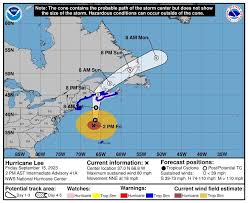The Role and Importance of the National Hurricane Center

Introduction
The National Hurricane Center (NHC), based in Miami, Florida, plays a critical role in storm forecasting and public safety across the United States and beyond. Established in 1965, the NHC is tasked with monitoring and forecasting tropical storms and hurricanes, issuing alerts that can save lives and minimize property damage. With the Atlantic hurricane season running from June 1 to November 30 each year, the relevance of the NHC cannot be overstated, especially as climate change continues to increase the intensity and frequency of storms.
Current Events and Developments
This year has been particularly active for the Atlantic hurricane season, with several tropical storms forming earlier than anticipated. The NHC’s capabilities have been further enhanced through advancements in technology, allowing for improved forecasting models that provide communities with timely and accurate information. For instance, Hurricane Idalia, which struck Florida in late August, was closely monitored by the NHC, providing advisories that enabled residents to prepare adequately.
The NHC issues various types of advisories, including Tropical Storm Watches and Hurricane Warnings, which are crucial during hurricane landfall. The updates, broadcasted through various media outlets and official channels, ensure that the public receives real-time information to take necessary precautions. The center also collaborates with local and federal agencies to coordinate emergency responses, making its role indispensable during hurricane emergencies.
Significance for Communities
The significance of the National Hurricane Center extends beyond immediate forecasts; its extensive research and historical data contribute to the understanding of hurricane patterns and trends. The NHC provides educational resources and preparedness tips to help communities understand the risks associated with hurricanes and how to stay safe. These efforts are especially valuable for vulnerable regions that are frequently affected by hurricanes.
Conclusion
As the world grapples with the growing threat of extreme weather events, the National Hurricane Center’s importance only continues to grow. Forecasting accuracy and timely warnings are vital not only for the protection of life and property but also for the early implementation of disaster recovery plans. Moving forward, ongoing investments in technology and research at the NHC will be critical in the fight against the impacts of climate change on hurricane activity. For communities along the coastlines, staying informed through the NHC’s updates can make the difference between safety and disaster.









